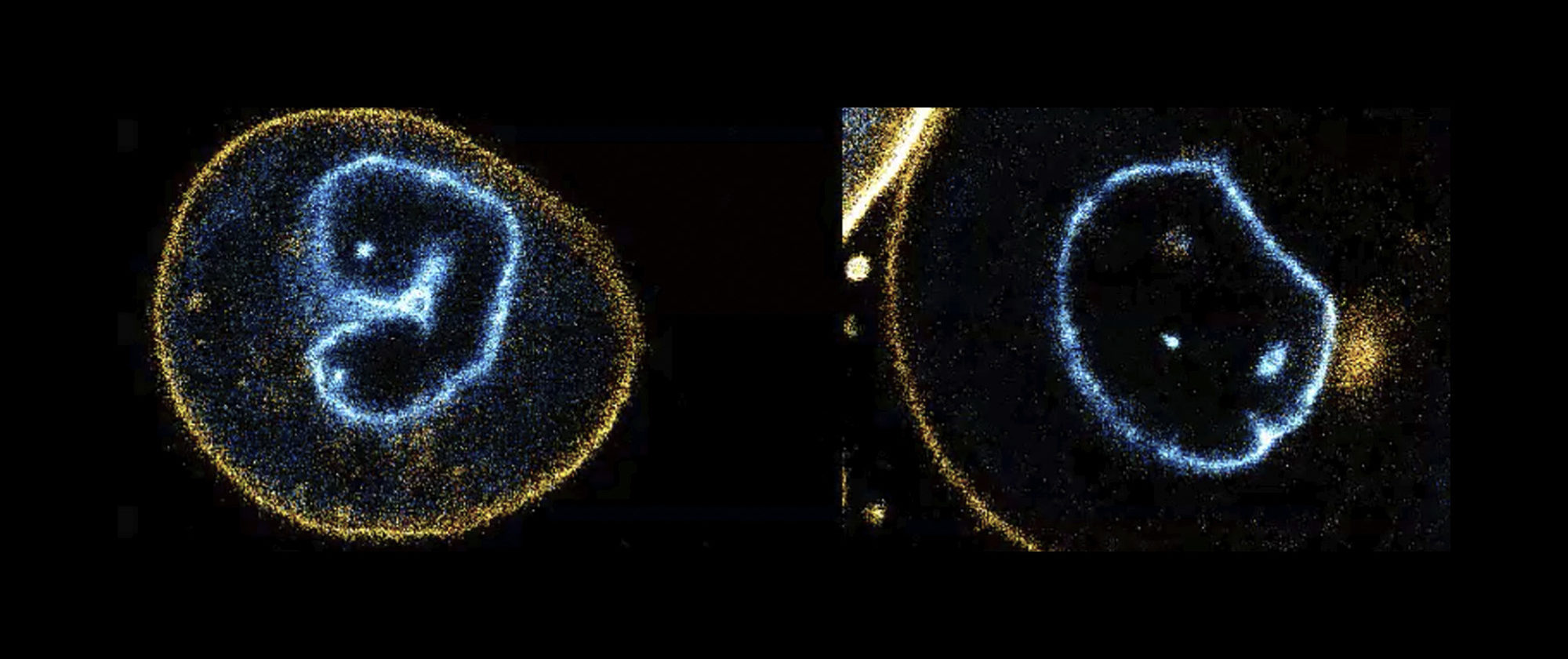Scientists at the Centre for Genomic Regulation (CRG), led by Verena Ruprecht, have found that proprioception – our ability to perceive changes in our body posture and movement – also exists at the single cell level. The scientists have shown how this ability of the nucleus to act as sensor of cell shape variations works.
Under normal conditions, the nuclear membrane (in blue in the image) is loose and wrinkled, like a used plastic bag. However, as seen in this microscope image from Valeria Venturini, a PhD student with dual affiliation at ICFO and the CRG, when a cell is squeezed (right) the nuclear envelope gets strecthed. This activates a mechanotransduction pathway that leads to changes in the cell cytoskeleton, allowing the cell to escape the crowded environment.
This reflex is activated in less than a minute, and it reverses when the cell has escaped. “Understanding this ability to sense deformation, measure it and react accordingly may have important implications in understanding processes like cancer growth and homeostasis”, says Venturini.
Venturini et al. The nucleus measures shape changes for cellular proprioception to control dynamic cell behavior. Science, 2020 Oct 16;370(6514):eaba2644. doi: 10.1126/science.aba2644.






